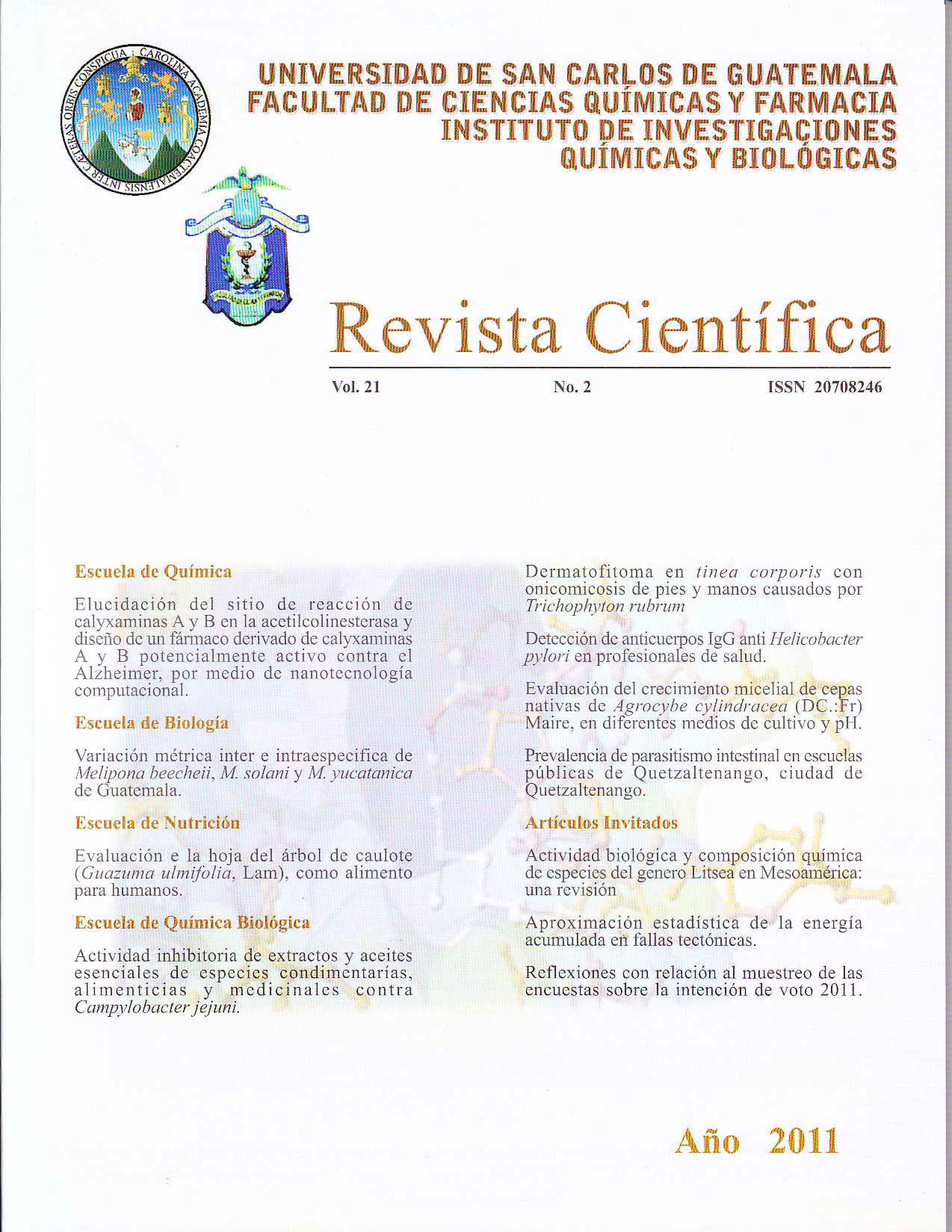Tinea corporis dermatofítoma with hands and feet onychomycosis caused by Trychophyton rubrum.
DOI:
https://doi.org/10.54495/Rev.Cientifica.v21i2.131Keywords:
Trichophton rubrum, dermatophytoma, onychomycoses, steroidsAbstract
The dermatophytosis are chronic infections caused by dermatophytes and sometimes can present microscopic clusters of spores, filaments, or both, called “dermatophytoma”. We present a patient with tinea corporis automedicated with topical corticosteroids, distal subungual onychomycosis of fingernails and total dystrophic onychomycosis of toenails. Samples from aim and fingernails showed a “dermatophytoma” and filaments in toenails. Trichophyton rubrum was isolated for both, arm and nails.
Downloads
References
Ameen M. (2010). Epidemiology of superficial fungal infections. Clinics in Dermatology, 28(2): 197-201. https://doi.org/10.1016/j.clindermatol.2009.12.005
Bonifaz A. (2010). Micología Medica Básica. 3 era edición. Editorial McGrawHill. Mexico, p.75- 77.
Arenas R. (2008). Micología Médica Ilustrada. 3era edición. Editorial McGrawHill. México, p.76-77.
Moreno G, Arenas R. (2009) Dermatofitoma extraungueal. Rev Iberoam Mieol. 26(2): 165-166. https://doi.org/10.1016/S1130-1406(09)70030-0
Martinez E. Moreno G, Ramon F, Martinez Justin, Arenas R . (2011). Case letter. Dermatophytoma: Description of 7 cases. In press.
Martínez E, Pérez M, Alas R et al. (2010) Dermatofitoma extraungueal. Comunicación de 15 casos. Dermatol rev Mcx. 54(1):10-13.
Martinez E , Alas R, Escalante K. Miller K , Arenas R. (2010). Dermatofitoma Subungueal. Estudio Epidemiológico de 100 casos. Rev. Chilena Dermatol. 26. 22-24.
Balleste R . Mousqués N . Gezuele E . (2003). Onicomicosis. Revisión del tema. Rev Mcd Uruguay. 19(1): 93-106.
Balderrama C, Rodríguez J, Borrego J. Martínez V. Frecuencia de la micosis en la quinta uña del pie. Revista Artemisa en linca. Consultado 2 de octubre de 2011 . Disponibleen: http://www.medigraphic.com/pdfs/cutanea/mc-2007/mc076e.pdf. 35(6): 280-284.
Bondct L. (2003). Las dermatofitosis: clínica, diagnóstico y tratamiento. Dermatol. Peru. 13: 7-12.
Smyte A. Asbati M, Díaz Y, Caballera E. (2004). Candida como agente causal d e Onicomicosis. Rev Dermatología Venezolana. 42(1): 25 -29
Jodra Olga . Rodríguez J . ( 1 9 9 9 ) . Especies fúngicas poco comunes responsable de onicomicosis. Rev Ibcroam Micol. 16: S-11-S15.
Grau Patricia. (2006). Corticoides Tópicos.Actualización. Rev Med Cutan Iber Lat Am. 34(1): 33-38
Robert DT, Evans EGV. (1998). Subungual dermatphytoma complicating dermatophyte onychomycosis, Br J Dermtol, 138: 189-190. https://doi.org/10.1046/j.1365-2133.1998.02050.x
Rodak B . (2005). Hematología, Fundamentos y Aplicaciones Clínicas. 2 d a edición. Editorial Médica Panamericana. Argentina. Pag. 323.
Welsh O, & Vera , Welsh E . ( 2001) . Onvchomvcosis. Clinics in Dermatology, 28(2): 15. https://doi.org/10.1016/j.clindermatol.2009.12.006
Downloads
Published
How to Cite
Issue
Section
License
Copyright (c) 2011 E. Martinez, C. Porras, D. Tejada, R. Arenas

This work is licensed under a Creative Commons Attribution 4.0 International License.
Authors who publish with this journal agree to the following terms:
- Authors retain copyright and grant the journal right of first publication with the work simultaneously licensed under a Creative Commons Attribution License 4.0 that allows others to share the work with an acknowledgement of the work's authorship and initial publication in this journal.
- Authors are able to enter into separate, additional contractual arrangements for the non-exclusive distribution of the journal's published version of the work (e.g., post it to an institutional repository or publish it in a book), with an acknowledgement of its initial publication in this journal.
- Authors are permitted and encouraged to post their work online (e.g., in institutional repositories or on their website) prior to and during the submission process, as it can lead to productive exchanges, as well as earlier and greater citation of published work.









